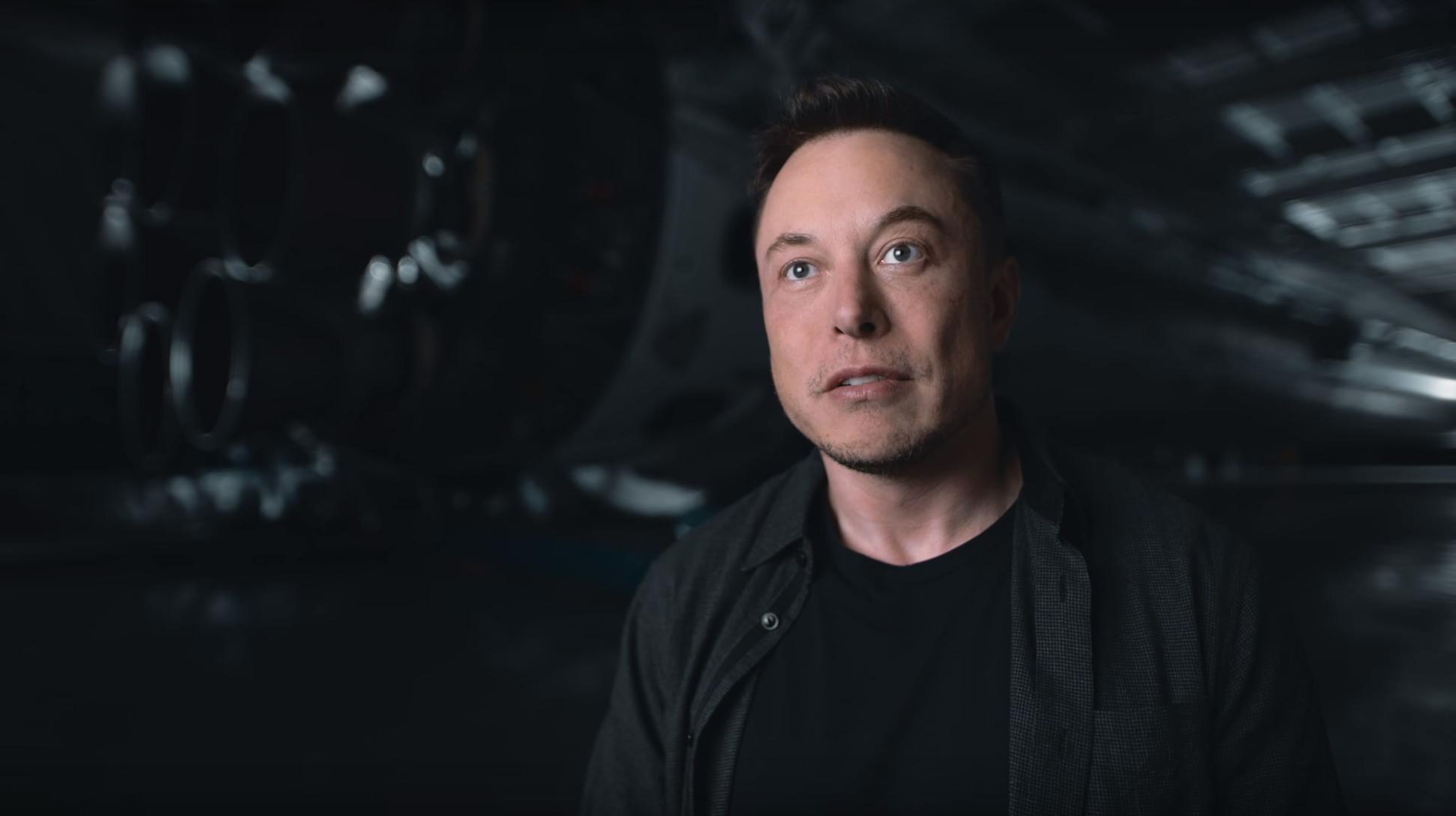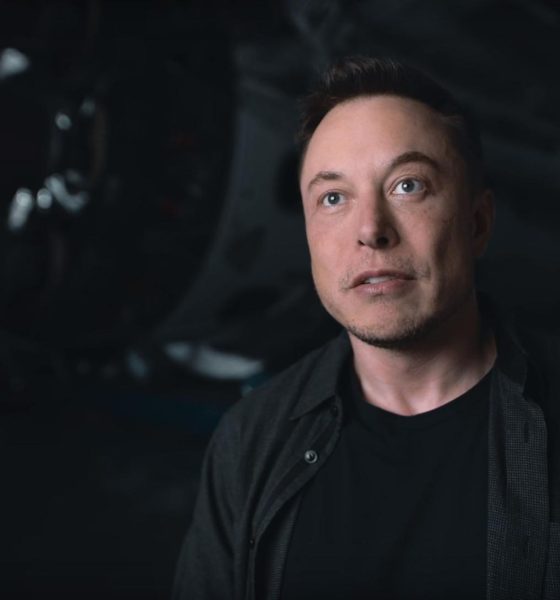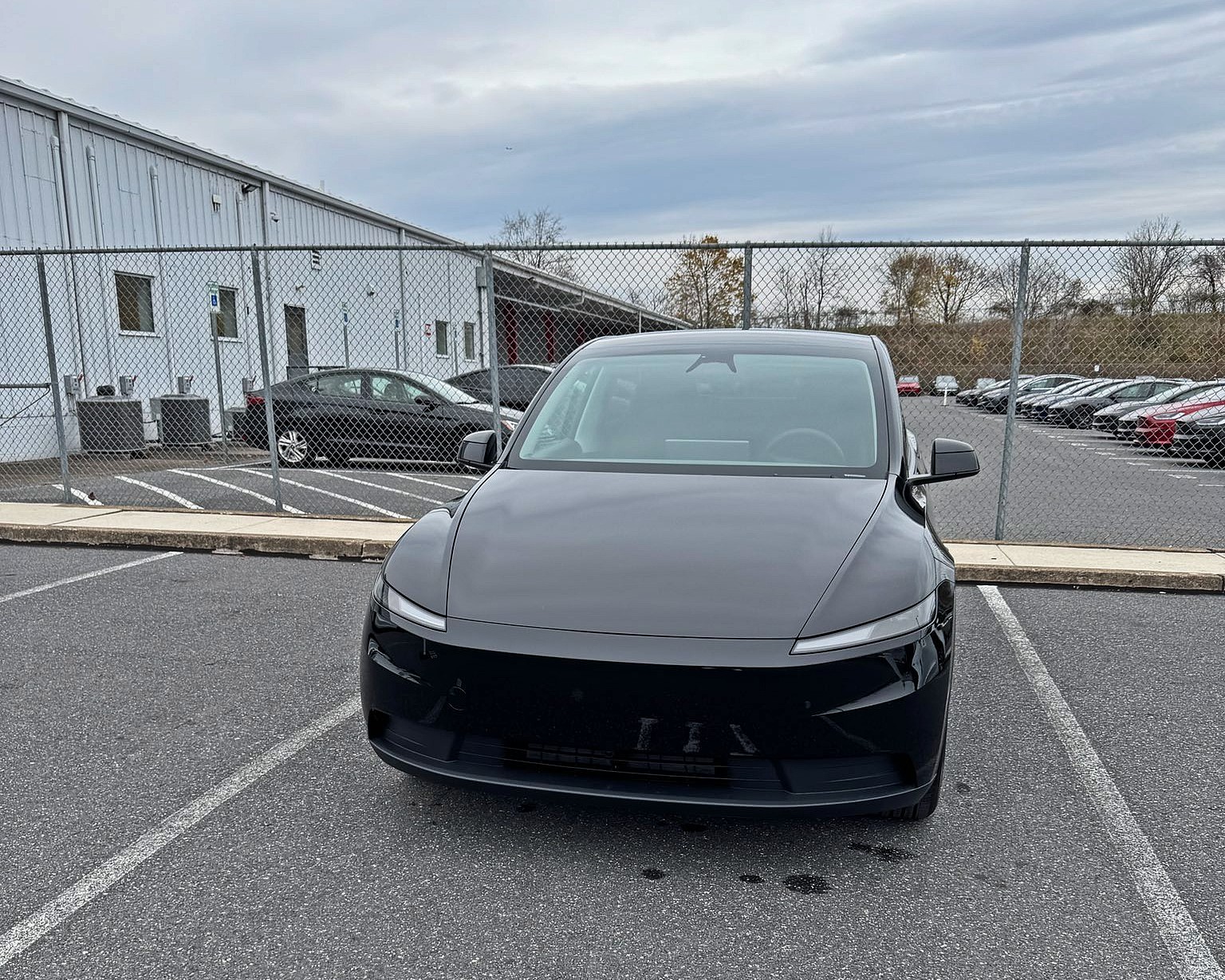

News
Elon Musk wants the Government to be a referee, not a player in the game of industry and innovation
Elon Musk is one of the most innovative minds to ever exist in the tech community. With his multiple companies providing successful changes in how some industries, like automotive, are looked at, Musk is a proven CEO with a track record to back it up. His many ideas basically changed the idea of what it is like to drive a car, which many of us thought would be dominated by gas and diesel-powered engines for years to come. An innovative mind and a lot of hard work undoubtedly contributed to Tesla’s success, and Musk has no interest in giving credit to anyone who didn’t earn it.
With the election coming to a close and a new Presidential campaign being selected to run the United States for the next four years, Musk was recently asked during an interview with the Wall Street Journal whether President-Elect Joe Biden’s plans to spend big on industry and innovation were a good thing. Musk doesn’t seem to have a problem with the idea, but he is vocal about the fact that the government should do more regulating than contributing. The role of Government, after all, is to enact laws and make sure they are abided by citizens. Additionally, assisting with companies’ innovation is something the Government shouldn’t stick its nose up at. Still, Musk just hopes that it plays more of an administrative role instead of becoming a “player in the game.”
A big thanks to our long-time supporters and new subscribers! Thank you.
“It’s the Government’s role to establish the rules of the game and then ensure that those rules are properly enforced,” Musk said. The CEO even compared the Government’s role to that of a referee in a game of football: Know the rules, enforce them correctly, make sure the game is fair.
What the Government doesn’t need to do is stay out of the way of the big companies who are working to innovate the processes of daily life to benefit them and their objectives. “I think when the Government does not do a great job is when they want to not just be a referee on the field, they want to be a player on the field. This does not end up in a good situation.”
The issue with the Government overreaching into the field of industry and innovation is that they will “pick technology winners and losers” instead of letting companies play out their innovation themselves. This could lead to small companies being undermined even if they have ideas or technology that larger companies don’t have access to.
This scenario, if Government was overly involved in tech and innovation, could have crippled Tesla’s efforts when the company was just starting to churn out vehicles in 2008. Even though Tesla had established itself as a player in electric vehicles, it was a small, relatively unknown company that faced massive problems due to lack of funds. Nearly shutting its doors after issues with the original Roadster, Tesla somehow overcame the adversity and received more investor money.
Now, imagine if the Government would have been a player instead of a referee in this scenario. It would have likely given a large financial assistance package to a well-developed, large scale automaker like Ford or GM to develop EVs. Instead, it stayed out of the innovation portion of the equation and let the players decide the game for themselves. Tesla ended up becoming the leader in EVs, while GM and Ford are failing to catch up. It’s fairly safe to say that without Tesla, EVs would not be what they are today. The legacy automakers that exist in the universe of automotive manufacturing would likely have cranked out one or two low-range models because their primary focus is still on gas-powered cars and not on electrification.
This whole picture perfectly aligns with how Tesla’s story has played out thus far. It is fairly obvious that the Government in 2008 would have sided with a company with proven infrastructure, and not some company who had a shot in the dark to change the entire framework of vehicle manufacturing. This is where Musk made his next point: Make the rules that incentivize the outcome, not the path.
The ultimate goal is to let companies figure out issues on their own. There is no reason to have Government programs essentially hold the hands of private industry. There needs to be more of a focus on the end goal and not the path a company takes to get there. Rarely is the road to success a straight and narrow path. Many companies, Tesla being a prime example, have to fight and struggle to create a new, innovative project. Tesla’s story is perfect evidence that the end goal takes a lot of persistence and it doesn’t need to be filled with hand-holding from large Government entities. While Biden’s plan to pump money into innovation and industry may help some companies get back on their feet in dire times of need, it shouldn’t hold the hands of these large companies whose job it is to figure out the answer to problems.
When large car companies begin to manufacture and deliver electric vehicles that are good for consumers, then they should be rewarded. Riding on the coattails of Government assistance packages that don’t necessarily guarantee innovation is the wrong way to go about things. When companies prove that they are in the business of creating a great product, then the rewards should come in. It’s that simple.
On behalf of the entire Teslarati team, we’re working hard behind the scenes on bringing you more personalized members benefits, and can’t thank you enough for your continued support!

News
Tesla Full Self-Driving warrants huge switch-up on essential company strategy

Tesla Full Self-Driving has warranted a huge switch-up on an essential company strategy as the automaker is hoping to increase the take rate of the ADAS suite.
Unlike other automotive companies, Tesla has long been an outlier, as it has famously ditched a traditional advertising strategy in favor of organic buzz, natural word-of-mouth through its production innovation, and utilizing CEO Elon Musk’s huge social media presence to push its products.
Tesla has taken the money that it would normally spend on advertising and utilized it for R&D purposes. For a long time, it yielded great results, and ironically, Tesla saw benefits from other EV makers running ads.
Tesla counters jab at lack of advertising with perfect response
However, in recent years, Tesla has decided to adjust this strategy, showing a need to expand beyond its core enthusiast base, which is large, but does not span over millions and millions as it would need to fend off global EV competitors, which have become more well-rounded and a better threat to the company.
In 2024 and 2025, Tesla started utilizing ads to spread knowledge about its products. This is continuing, as Full Self-Driving ads are now being spotted on social media platforms, most notably, X, which is owned by Musk:
NEWS: Tesla is running paid advertisements on X about FSD (Supervised). Here’s an ad they started running yesterday: pic.twitter.com/IHVywLMyTd
— Sawyer Merritt (@SawyerMerritt) November 25, 2025
Interestingly, Tesla’s strategy on FSD advertising is present in Musk’s new compensation package, as the eleventh tranche describes a goal of achieving 10 million active paid FSD subscriptions.
Full Self-Driving is truly Tesla’s primary focus moving forward, although it could be argued that it also has a special type of dedication toward its Optimus robot project. However, FSD will ultimately become the basis for the Robotaxi, which will enable autonomous ride-sharing across the globe as it is permitted in more locations.
Tesla has been adjusting its advertising strategy over the past couple of years, and it seems it is focused on more ways to spread awareness about its products. It will be interesting to see if the company will expand its spending even further, as it has yet to put on a commercial during live television.
We wouldn’t put it out of the question, at least not yet.
News
Tesla Model Y Standard: first impressions from a Premium owner

Tesla was nice enough to hook us up with the new Model Y “Standard” trim for a few days, and while we’ll be sure to fill you in on the full experience in the coming days, there are a lot of differences we noticed right off the bat, which make the ownership experience different from the “Premium” configuration level.
I purchased a Model Y Long Range All-Wheel-Drive back in August and took delivery just two weeks later. Through the first three months of owning my car, I’ve come to love so many things about the Tesla experience.
I traded my ICE vehicle for a Tesla Model Y: here’s how it went
However, I was interested in experiencing the affordable trim and seeing whether I would miss any of the voided features of the “Premium” Model Y.
Through the first 24 hours, here are my first impressions of the Model Y Standard as a Premium trim level owner:
Overall Aesthetic
The lack of a light bar is not something that is a dealbreaker. In fact, I would argue that the Model Y Standard’s more traditional headlight design is just as pleasing from an aesthetic standpoint.
The car is great looking from top to bottom; there are not a substantial number of differences besides the lack of a lightbar on both the front and the back of the car.
Overall, it is a very sleek vehicle, but the major changes are obviously with the interior.
Interior Changes
This is where the big differences are, and some of the things I’ve gotten used to in the Premium are not included. If I didn’t have a Premium Model Y already, I’m not sure I’d miss some of the things that are not present in the Standard trim, but I believe I’d get annoyed with it.
First impressions:
✅ Interior is excellent. I definitely miss the additional storage already that is available in my Premium. I could definitely get over it though
✅ Noticeable step down in sound system. Long Time by Boston absolutely cranks in the Premium; it’s still very… https://t.co/JNWvxTd8p1
— TESLARATI (@Teslarati) November 25, 2025
Storage
The Premium has a large storage compartment between the cupholders and the wireless charger, which is not present in the Standard trim. Instead, it is more like the Cybertruck, as there is a pass-through and floor storage.
I think that the pass-through is nice, but the additional storage is something I take advantage of, especially as someone who films Full Self-Driving videos, which requires hauling mounts, GoPros, and other accessories.
The sleekness of the Premium trim is also something I prefer; I really enjoy having the ability to close those compartments and cover the cupholders.
Obviously, this is a really trivial issue and not something that is substantially impactful from an ownership experience. If I weren’t already an owner, I am not sure I’d even have something to complain about.
Material Differences
The Premium trim seats are completely Vegan Leather, which I really do like, even as someone who doesn’t really love leather seats due to their temperature dependency.
The Standard trim features a Textile and Vegan hybrid, which has half of the seat a different material than the other.
The material is very similar to what I had in my previous car, a Bronco Sport. It was very durable, easy to clean, dried quickly, and hid a lot of things that leather does not, like oils from your skin, which constantly require attention to keep your interior looking fresh.
The wireless charger is also a different material, as the Premium features an Alcantara material on that. The Standard has a rubberized and textured backing, which looks good, too. They’re both more than suitable.
Other Missing Features
The Standard lacks a few minor things, most noticeably is the ambient lighting. The biggest change, however, and something I really miss, is the glass roof.
A lot of people told me that when I got my Model Y, I wouldn’t even notice the glass roof after a few weeks. That could not be further from the truth. I look out of it all the time, and it’s one of my family’s favorite parts of the car.
My Fiancè and I really love parking and watching Netflix when we pick food up, especially when it’s raining, because the glass roof gives such a great view.
We also loved it as Fall arrived, because it was great to look at the foliage.
Buy the Tesla.
Enjoy the glass roof. pic.twitter.com/r2GDyOEEWu
— TESLARATI (@Teslarati) October 28, 2025
Bigger Differences
There are also a handful of very noticeable differences from the overall cabin experience, especially with the sound system.
Much Weaker Sound System
The Model Y Standard has just 7 speakers and 1 amp, with no subwoofer. This is a significant step down from the 13-15 speakers in the Premium Long Range AWD Model Y, the 2 amps it comes with, and 1 subwoofer in the trunk.
I usually like to listen to Long Time by Boston to test out a sound system, and it was noticeably weaker in the Standard. It was missing a big portion of the umph that is provided by the Premium’s sound system.
Cabin Noise
It feels like the Cabin Noise is definitely more noticeable in the Standard, which is something I really love about my Model Y. It is able to dampen so much road noise from louder cars, and I don’t feel as if it is very quiet in the Standard.
This is perhaps the biggest make-or-break for me with this car. I truly have been spoiled by how quiet the cabin is in the Premium, and it’s due to the lack of acoustic-lined glass in the Standard.
I will be doing a more in-depth review of the Model Y Standard, especially with ride quality, later this week.
News
Tesla takes a step towards removal of Robotaxi service’s safety drivers
Tesla watchers are speculating that the implementation of in-camera data sharing could be a step towards the removal of the Robotaxi service’s safety drivers.

Tesla appears to be preparing for the eventual removal of its Robotaxi service’s safety drivers.
This was hinted at in a recent de-compile of the Robotaxi App’s version 25.11.5, which was shared on social media platform X.
In-cabin analytics
As per Tesla software tracker @Tesla_App_iOS, the latest update to the Robotaxi app featured several improvements. These include Live Screen Sharing, as well as a feature that would allow Tesla to access video and audio inside the vehicle.
According to the software tracker, a new prompt has been added to the Robotaxi App that requests user consent for enhanced in-cabin data sharing, which comprise Cabin Camera Analytics and Sound Detection Analytics. Once accepted, Tesla would be able to retrieve video and audio data from the Robotaxi’s cabin.
Video and audio sharing
A screenshot posted by the software tracker on X showed that Cabin Camera Analytics is used to improve the intelligence of features like request support. Tesla has not explained exactly how the feature will be implemented, though this might mean that the in-cabin camera may be used to view and analyze the status of passengers when remote agents are contacted.
Sound Detection Analytics is expected to be used to improve the intelligence of features like siren recognition. This suggests that Robotaxis will always be actively listening for emergency vehicle sirens to improve how the system responds to them. Tesla, however, also maintained that data collected by Robotaxis will be anonymous. In-cabin data will not be linked to users unless they are needed for a safety event or a support request.
Tesla watchers are speculating that the implementation of in-camera data sharing could be a step towards the removal of the Robotaxi service’s safety drivers. With Tesla able to access video and audio feeds from Robotaxis, after all, users can get assistance even if they are alone in the driverless vehicle.








